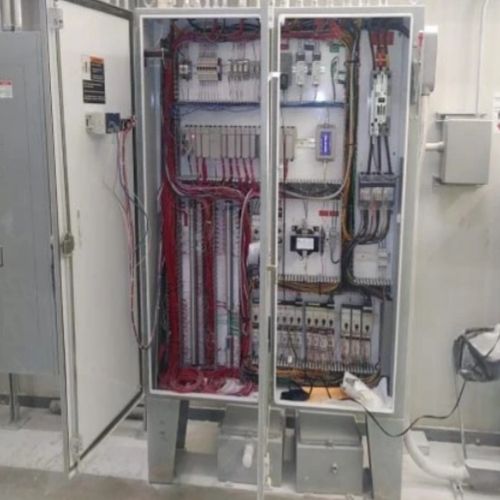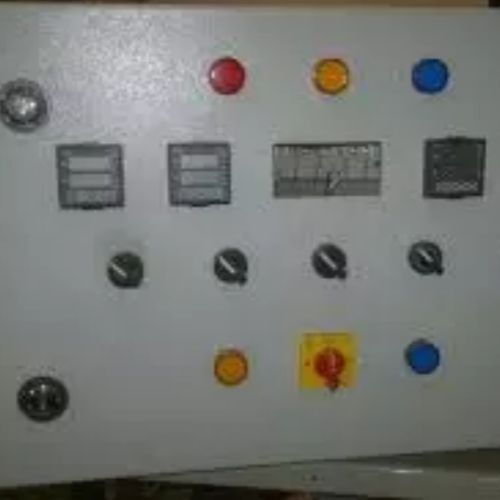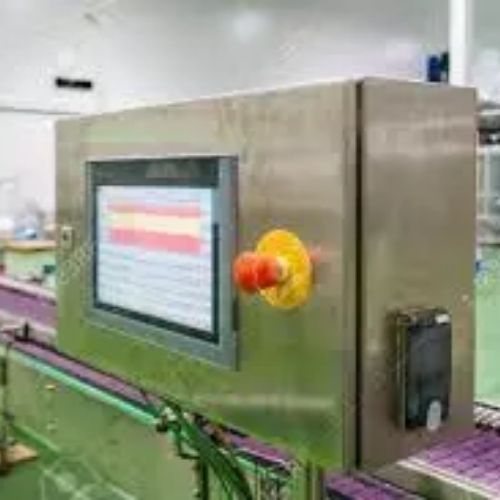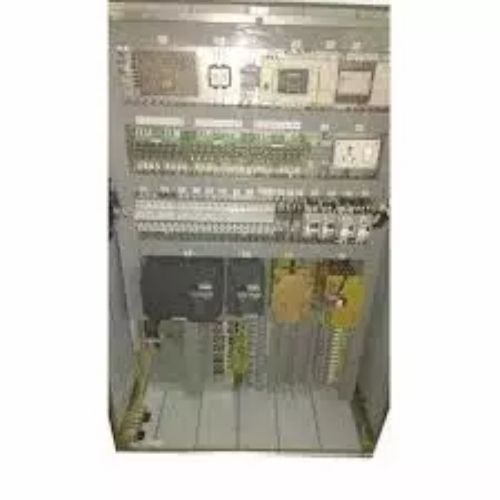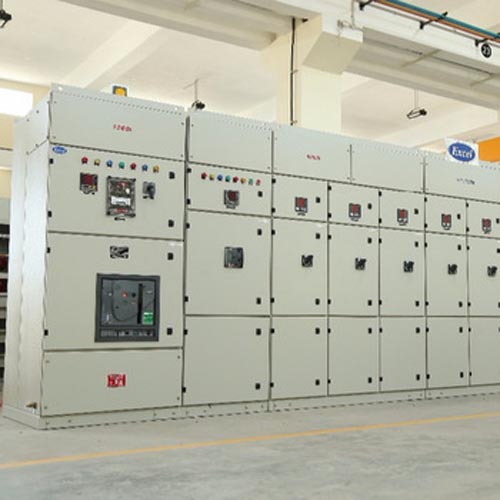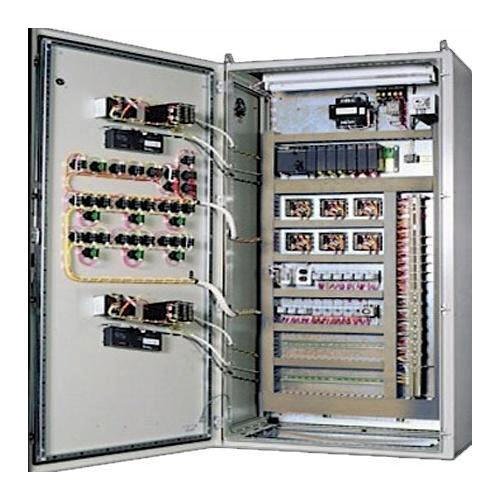KDM machine control panels are available in different configurations making them suitable for any specific industrial application.
In pharmaceutical, power plant, food and beverage, any other commercial and industrial packaging need, you can count on KDM.
Our machine control panel will surely add value to your sensitive and expensive equipment. Our technical and professional engineers are always ready to help and guide you throughout the process. A maintenance-friendly, lower-cost control panel in KDM is available in a wide variety of sizes, shapes, materials,s and protective features. A complete line of products available is assured.
- Certified ISO9001-2015 machine control panel supplier
- A complete line of machine control panel options is available
- Maintenance-friendly and cost-saving machine control panel
- Widely used in the most challenging power and control needs
KDM Machine Control Panel Series
The production machine control panel is manufactured with industries safety certification. Highly dependable to any control system utilization.
The packaging machine control panel is used to store different items and valuable equipment. We are engaged to offer the best quality assortment of packaging machine control panels to our valued customers.
Backed by our professional engineers and technical team, we are dedicated to offering a comprehensive range of control panels for processing plant machines. High-quality products that can be customized.
A type-tested pharmaceutical machine control panel is offered is precisely engineered from premium quality raw material and high-tech machinery. Panels are tested to several parameters for checking.
Send your Inquiry on KDM Machine Control Panel
KDM covered a broad range of tooling applications ultimately saving time and cost that will help you spend less effort. These machine control panels have been widely appreciated for their world-class standards design.
We, in KDM, gathered over 50 expert engineers to effectively design and manufacture panels with excellent handling capability.
- Highly customized Machine Control Panel
- Quality testing and inspection performed
- Custom-design panel meet specific project demand
- Lowest MOQ of 1pc
Related Products of Machine Control Panel
KDM Machine Control Panel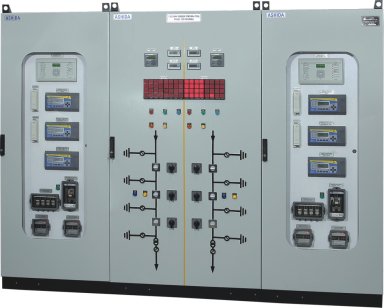
KDM machine control panels are made of high-grade raw material with the support of state-of-the-art machinery and equipment.
These packaging machines are being manufactured according to industrial standards.
Therefore, we can ensure you the highest quality standard panels.
Panel speed, temperature, and progression are checked to various quality parameters.
Consequently, we are able to complete your satisfaction rate.
As this equipment has been passed through various rigorous tests and quality inspections during production, rest assured you will get the highest quality panels.
Our unconventional designed panels had been widely used to meet different project requirements.
We had a wide variety of panel options that will help you get the right and best panels.
With regards to the material being used, we can utilize different high-grade materials including, aluminum, stainless steel, and polycarbonate.
For packaging various equipment and item, our technically advanced range of control panels surely improve your system safety.
Enhance packaging reliability, intelligence, and security for the equipment and workers.
Our machine control panel is designed to be used in the most challenging power and control needs.
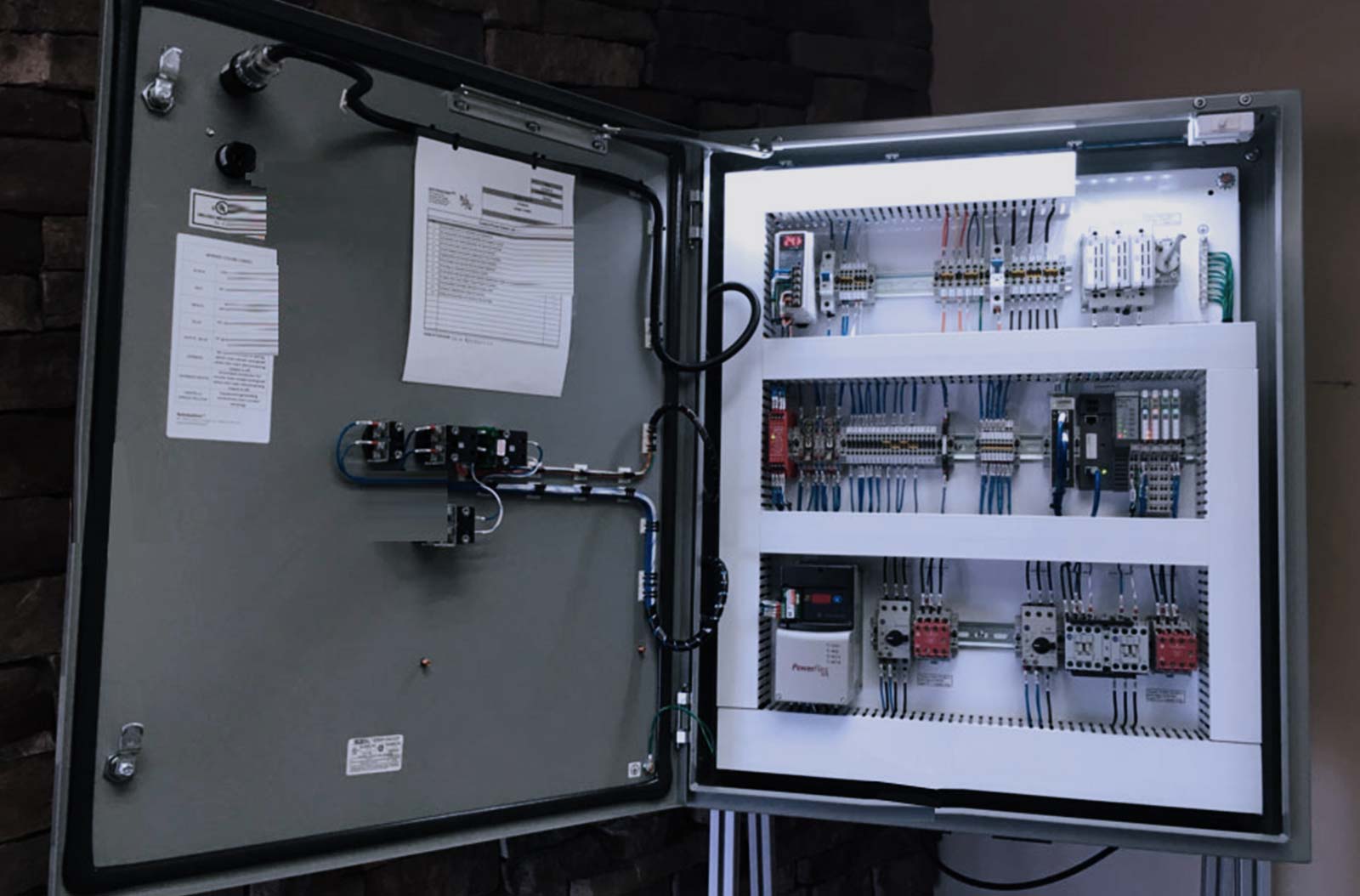
All machine control panel can also be customized in order to complete your request.
We can custom-design with your standards and requirements.
The panel main features such as length, width, height, and accessories can be customized.
We built panels that will help and improve efficient operations and infrastructural development.
We want to solve the toughest environmental challenges where the panel is installed.
The safety, security, noise, and space issues are taken into consideration.
In our modern control room, the production is performed.

We are ISO9001-2015 certified manufacturer.
With this management system, you can guarantee highest quality standard products for your need.
We are one of the reliable and trusted supplier and factory in China.
Lowest MOQ is offered.
Whether you need product for your business or any project, KDM has solution for you.
If you are still unsure to you machine control panel requirements, please contact KDM freely.
We will be happy to help you and discuss further.
Machine Control Panel: The Complete FAQ Guide
Machine control is a crucial point of every industrial facility where machines are utilized for ongoing automatic processes.
To prevent major failures and establish proper working conditions machine control panels are used.
Let’s have a closer look at this piece of technology.

- What is a machine control panel?
- How does a machine control panel work?
- What types of machine control panels are there?
- What kind of materials are used to manufacture machine control panels?
- What are the main parts of the machine control panel?
- How machine control panels are mounted?
- When do you need switches on the control panel door?
- How to install electrical equipment inside the machine control panel enclosure?
- Where machine control panels are used?
- How to design a machine control panel?
- Why do you have to label components and wires inside the machine control panel?
- What kind of protection is needed for machine control panels?
- What is KDM MOQ when ordering machine control panels?
- Are KDM machine control panels UL certified?
- What are the exact standards used when manufacturing machine control panels?
What is a machine control panel?
A machine control panel is a flat area where control or monitoring instruments are displayed.
It also can have a form of an enclosed unit that is the part of a system that users can access.
They can be found in various facilities: factories, production lines, in places such as nuclear power plants, ships, aircraft.
Older control panels are most often equipped with push buttons and analog instruments.
On the other hand, modern panels have touch screens that are used for monitoring and control purposes.
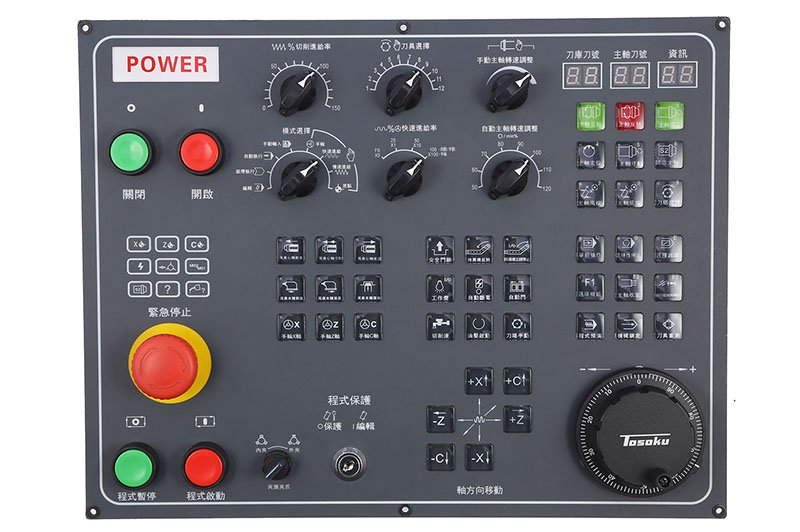
How does a machine control panel work?
The operation of machines might be controlled with analog, digital, and motion capabilities.
In order to correctly develop industrial systems with machine control panels, a design methodology is required.
There are three basic design methodology sections required in developing machine controls: signal, decision, and action.
# 1. Control signal
First of all, there is a control signal that initiates the whole control operation through a set of electromechanical contacts or electronic switching.
The target control device will be activated by control signals.
If the electromechanical or electronic switching device is not active, the control signal will not energize the target electromechanical or electronic load.
The machine controls specification will provide the type of electromechanical or electronic switching device to use for the desired control signal.
Examples of control signal devices consist of the following electromechanical or electronic components:
- pushbutton switches;
- limit switches;
- flow switches;
- temperature switches;
- photoswitches;
- HMI panels;
- proximity switches.
# 2. Decision
The heart of each decision section is a core digital processing system.
Such a system is divided into two subcategories: data paths and control logic.
The digital paths include arithmetic and data movement circuits like basic adders and shift registers.
The control logic creates timing signals to process proper sequences for correct machine operation.
The decisions are made by a central processing unit.
In the early days of programmable machines, a microprocessor was used.
Today, FPGAs, PSoCs, ou ARM-Cortex based microcontrollers can perform decision processing activities quickly and effectively.
Arithmetic, sequencing, low-level logic and control operations are typical decision activities carried out in the machine controls programmable processor.
Combinational circuits with basic logic gates like AND, OR, NOT, NOR can perform low-level decisions for the target machine control.
These low-level gates can be implemented using FPGAs or PSoCs.
Control signals are received by the decision section from the electromechanical or electronic switching device.
The electrical information can be either in an analog or in digital format to match the decision section processes.
An appropriate output signal is provided that will drive a specific machine control action.
The decision functions are traditionally coded in a high-level language such as C, C++, or a graphical format consisting of a ladder logic program.
The actual decision parameters will be provided in the machine controls’ functional specifications.
# 3. Action
After the decision section processing logic functions have been specified in a software requirements specification, the output action function needs to be specified.
The action is traditionally physical either providing motion, visual, or audible function.
The action directs the motion, visual, or audible effects of the machine control.
Motors, solenoids, LED pilot lamps, LCD displays, and electronic annunciators are examples of components used for output machine control functions.
When gathered, a CPU’s output control data can be sent to electromechanical or electronic actuators of the machine control panel with the help of MC (machine control) wire.
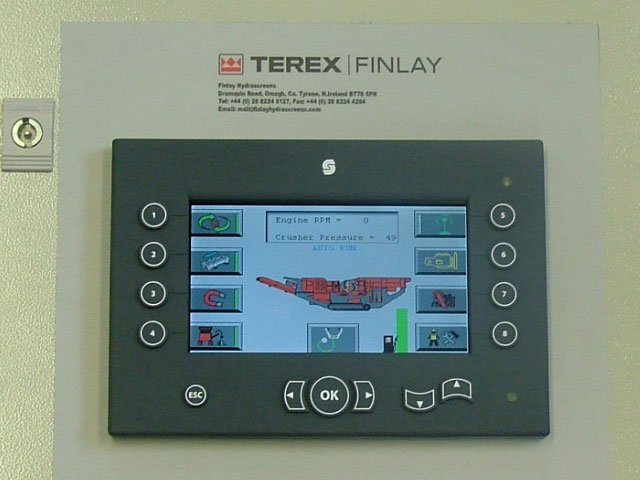
What types of machine control panels are there?
# 1. High voltage control panels
High voltage control panels provide centralized control and protection of high-voltage power equipment and circuits in industrial, commercial, and utility installations involving generators, motors, feeder circuits, transmission, and distribution lines.
# 2. Low voltage control panels
As in the previous case, low voltage control panels provide centralized control and protection of various equipment and circuits.
The only difference is that in this case, control panels operate in a low voltage regime.
# 3. Motor control panels
Motor control panels are devices that operate and regulate the performance of the motor.
UN motor control could include an automatic or manual method to start and stop the motor, select the rotation direction (forward or reverse), limit or regulate the torque, regulate the speed, and/or protect the motor from an accidental overload or fault.
High-performance motor controls are needed practically in any industrial application.
# 4. Instrument control panels
Instrumentation control panels are designed to monitor and control various levels such as temperature, flow, current, and pressure from the field instruments that are connected to it.
These panels are used in a wide variety of industries including petrochemical, refineries, pipelines, pharmaceutical, water wastewater, and food processing.
# 5. Generator control panels
The heart of a generator control panel is its ability to automatically start and stop the engine of a generator.
Le panneau de commande du générateur can monitor critical engine functions such as oil pressure and coolant temperature.
Also, it can shut down the generator engine to protect it from harm.
# 6. Lighting control panels
As the name suggests, lighting control panels are used to manage the operation of different lighting fixtures where engines are used.
With the help of such panels you can regulate light intensity, set timers, check the working conditions of the lighting fixture and so on.
# 7. Power control center panels
These are used as a power distribution board to control the power supplied to motors, panels, and transformers.
The power control center (PCC) measured to be the base of an electrical organism in any industry.
Hence it shall present users long term dependability, protection, low maintenance, and testing time.
# 8. Power distribution panels
Power distribution panels are used to serve a wide range of applications including distribution of power, control, ground-fault protection, and monitoring.
Apart from this, the power distribution panel also serves as an alarm panel for freeze protection, broad temperature-maintenance, and heat-tracing applications.
# 9. Power factor correction panels
As it comes from the name, APFC or automatic power factor control panels are mainly used for the improvement of power factor.
Power factor can be explained as the ratio of active power to apparent power and it is a key factor in measuring electrical consumption.
# 10. Variable drive frequency panels
The VFD panel (variable frequency drive panel) also known as the VFD control panel is designed to control the speed of the electric motor and feed pump.
They are often used in drilling, pumping, and other large machine applications.
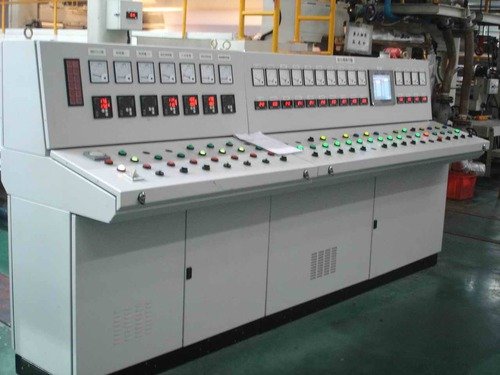
What kind of materials are used to manufacture machine control panels?
The main three materials used when manufacturing electrical equipment and its enclosures are as follows:
# 1. Metal
The three most common metals in control panels are acier inoxydable, aluminum, and carbon.
Acier au carbone costs less but must be painted or galvanized to resist corrosion.
The biggest advantage of carbon steel is that you can easily modify it after fabrication for installation or expansion.
Aluminium and stainless steel are more durable and long-lasting, but it is harder to modify them later on.
All three metals are less resistant to moisture than thermoplastics or fiberglass but are the easiest to customize during design and fabrication due to the wide availability and versatility of metalworking tools.
Metal will also absorb and conduct heat more than other materials, which can be helpful for dissipating high temperatures if thoughtfully designed.
# 2. Thermoplastics
Thermoplastics include polycarbonates, polyester, ABS, PVC, and more.
La plupart plastics are highly resistant in corrosive environments and can be modified easily for expansion or installation.
Thermoplastics have perfect insulation properties, that is why they are often chosen for the most temperature-sensitive electrical controls.
However, thermoplastics are also much less customizable during the design and construction phases.
# 3. Fiberglass
This material has strengths and weaknesses on both extremes of the spectrum.
Fibre de verre is immune to rust or oxidation from corrosive elements and offers the highest chemical resistance.
However, fiberglass equipment is very rigid and abrasive to tools, making it the hardest to shape and later modify.
Fiberglass also degrades quickly in sunlight and prolonged exposure to heat, so the applications for fiberglass are very specific.
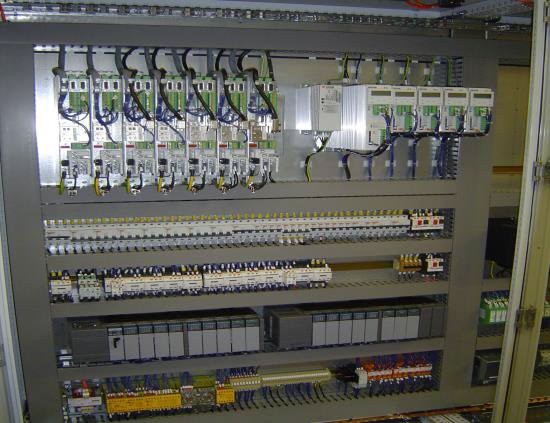
What are the main parts of the machine control panel?
# 1. Power circuit
This refers to any circuit that uses electricity in order to operate a load on the control panel.
Closing the circuit causes the machine attached to it to start operating while breaking the circuit stops the machine.
# 2. Control circuit
A special type of circuit that is used to control power circuits available on the panel.
It is used to ensure safety from short-circuiting for the machine and workers.
# 3. Switches
The most common type of power and/or control circuit is used to control the starting and stopping of the machine connected to the control panel.
# 4. Terminal blocks
It refers to modular, insulated blocks that are used to connect one or more circuits on the control panel to one another.
# 5. Contactors
A contactor is an electrically controlled switch that acts as a relay circuitry for high current rating equipment.
They make or break power to the device being controlled.
# 6. Motor drives
The motor drive consists of a mechanical system in which an electric motor is used to drive a machine or other equipment connected to the control panel.
# 7. Transformers
These static devices are used to transfer electrical charges between two or more circuits.
The action uses primary and secondary windings and results in power transfer without changing the frequency of the current.
# 8. Overcurrent protection devices
Such devices are used to protect the machines connected to the control panel from electric power surges through the use of circuit breakers and electric fuse circuits.
# 9. Grounding panels
Grounding panels are used to protect against electric noise as well for keeping the workers safe from electric shocks.
Grounding panel connected to the industrial control boards has to be placed deep in the ground at locations where there is no danger of people or animals coming in contact with them.
# 10. PLC (programmable logic controller)
Automate programmable is the heart of any machine control panel.
Its main function is to send and receive data from various parts of the system in order to make the right solutions.
We recommend the following video for those readers who want to learn more about the components inside the machine control panel enclosure.
How machine control panels are mounted?
Machine control panels manufactured by KDM can be mounted to the floor, wall, pole, Rails DIN, etc.
Such flexibility with the mounting options of the control panel allows the designer to put the control panel anywhere in your facility.
Thus, the control panel can become a part of the most effective integrated system solution.
Please, keep in mind that the use of an air conditioner or other added cooling device can affect the control panel workspace.
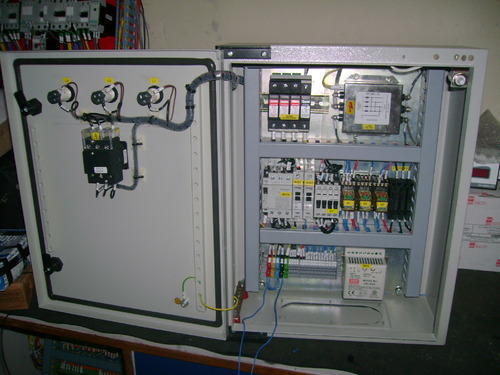
When do you need switches on the control panel door?
In order to make the operation of control panels even more flexible, additional external switches and buttons might be used.
Typically, such switches are placed on the door of the control panel so you can access them without opening the control panel.
We recommend using the next additional buttons on your machine control panel.
# 1. Mute buzzer
The first switch that can be placed on the door of the control panel is a mute buzzer.
This is the button that you use and press when there is an active alarm on the system.
When there is an active alarm on the system, the technician, engineer, or another responsible person, presses this button to acknowledge the alarm and mute the buzzer.
That’s why this button is often called the acknowledge button as well.
# 2. Emergency button
Typically, below the buzzer switch, you can find the big red emergency shutdown push button or the E-Stop as it’s often called.
As it can be suggested by the name, this switch is needed to shut down the whole system when there is an emergency.
By doing so the major damage to the system or the people around it might be prevented.
The switch itself has a guarding around it, called a shroud.
This will prevent the button from being used unintentionally.
Emergency-stop devices are always close to where people work in order to be useful, but we have this shroud around it to prevent any unwanted use.
Pourquoi?
Because if someone presses this button unintentionally the whole system will be shut down completely.
# 3. Reset button
After the emergency situation is cleared and you want to run the system again, you can press the ESD reset button, or emergency shutdown reset, to clear the alarm.
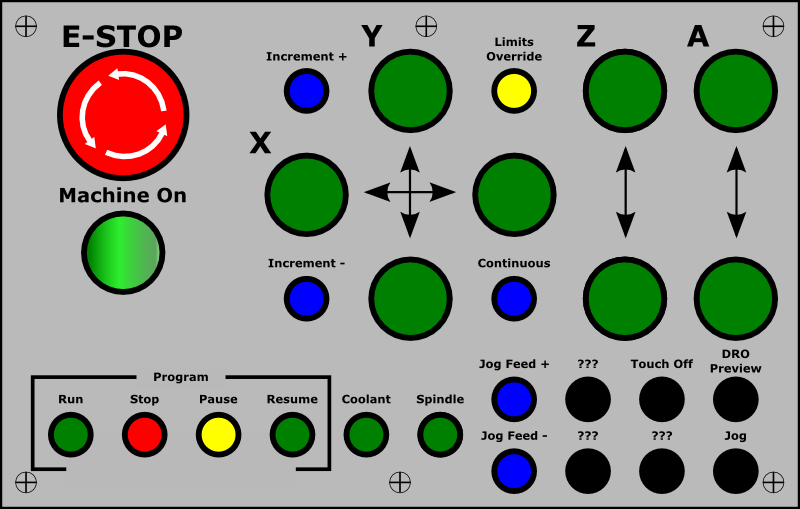
How to install electrical equipment inside the machine control panel enclosure?
First of all, let’s see what kind of installation options are available inside the machine control panel enclosure.
First of all, each machine boîtier du panneau de commande can utilize shelves and DIN rails to store the needed equipment with maximum efficiency.
When installing components inside the control panel enclosure, you should start from the correct layout and component placement first.
In any control panel, components or their groups must be laid out in a logical-functional manner.
Since most panels have a main incoming power disconnect switch located in the upper right of the panel, it makes both logical and functional sense to locate the components with the highest voltage rating at the top of the panel as well.
From there, the power distribution down to the power components at the lowest voltage level should generally follow a left-right and top-bottom hierarchy.
Each group of power distribution components should start with the main breaker for that power level at the left, followed by distribution breakers, fuses, and terminals.
Keep enough space between the above-mentioned components to allow the expansion.
The programmable logic controller (PLC) racks and input/output (I/O) terminals are typically placed below the power distribution components.
Since heat rises, it makes sense to place hotter components above PLC and other sensitive equipment.
Note: each control panel enclosure has to have means for expelling the excess heat at the top.

Where machine control panels are used?
As we said at the beginning of this FAQ, machine control panels are used in the cases where industrial machines have to be controlled automatically.
Let’s name some examples where machine control panels can be used:
- Power plants.
- Various manufacturing sites (automotive, commodity production, etc.)
- Construction sites.
- Refineries.
- Maritime and aircraft engines.
- Mines and lumber industry facilities.
- Boiler and pneumatic mechanisms.
- Warehousing and food processing machinery.
- Jolting machines, jolt squeeze machines, molding machines, and much more.

How to design a machine control panel?
Efficient control systems start from a proper control panel design that includes the creation of electrical schematics or drawings.
Such drawings have to include a table of contents, functional diagram, power distribution, I/O diagrams, control cabinet layout, back panel layout and bill of needed materials.
It is better to create a complete 3D model or block diagram of the machine with descriptive text pointing to all major components, input and output devices, their functions, etc.
Despite it requires more time and hassle, it helps the engineer to get the full picture of the control system design and saves you from failures in the future.
As a minimum, you may create a top view block diagram and point out I/O details with machine functions.
Keep in mind that different power distribution diagrams (like 480/240Vac, 120Vac, and 24Vdc) should be placed on separate pages.
The same thing should be done to the safety circuit and miscellaneous control circuit diagrams.
Such an approach helps to organize and simplify the schematic.
Include detail drawings of the I/O and limit it to two I/O modules per page to keep the schematics easy to read.
Note: The I/O and PLC program descriptions must match to avoid future confusion.
Finally, you can start creating the control cabinet layout, specifying the cutouts and cabinet-mounted devices.
Remember that you have to consider the future application and its environment to avoid possible hazards.
If you are dealing with water-affected areas it would be a good idea to use a control panel enclosure with high IP/NEMA rating (which are discussed below).
Also, keep in mind that you have to group similar voltage-level devices or functions together.
Draw all this up and the machine control panel design is considered to be done.
Note: electrical CAD design is a better option than a hand-drawn schematics.
CAD software helps to standardize electrical symbols and part database, along with automating some of the design processes, such as adding wire numbers and cross-referencing devices.

Why do you have to label components and wires inside the machine control panel?
Labeling of components and wires is a good practice not only in the case of machine control panels but in the electrical applications in general.
It obviously helps with the maintenance and operation of the control system.
There are several rules you should follow when labeling wires and components of the machine control panel:
- The syntax on the labels must make sense, and they should be clearly visible.
- Wire labels must be placed at each end of the wire.
- All wires connected to a power distribution terminal must be labeled per the terminal number.
- All other wires must be labeled following the line number in the schematics.
- Each PLC I/O wire should be labeled following the syntax that corresponds to its PLC address.
- Good control panel design should feature a strong layout and component placement, labeling, panel sizing, and component spacing.
- All the components of the machine control panel are typically labeled with a standard abbreviation identifying the type of component.
- Finally, components must be labeled by the corresponding line number for that component in the schematics.

What kind of protection is needed for machine control panels?
In this case, the exact answer directly depends on the place where the machine control panel will be used.
In previous questions, we’ve mentioned that applications connected with water require the use of IP/Boîtiers NEMA.
Also, the enclosure might be fireproof if you are dealing with some dangerous applications, like the use of a machine control panel near explosive gases.
Finally, the control panel enclosure has to be protected from mechanical impacts.
The so-called Cote IK is used in such a case.
To conclude, the best protection in all the above-mentioned matters can be provided by stainless steel enclosures.
KDM can comply with the highest requirements of IK, IP, NEMA ratings.
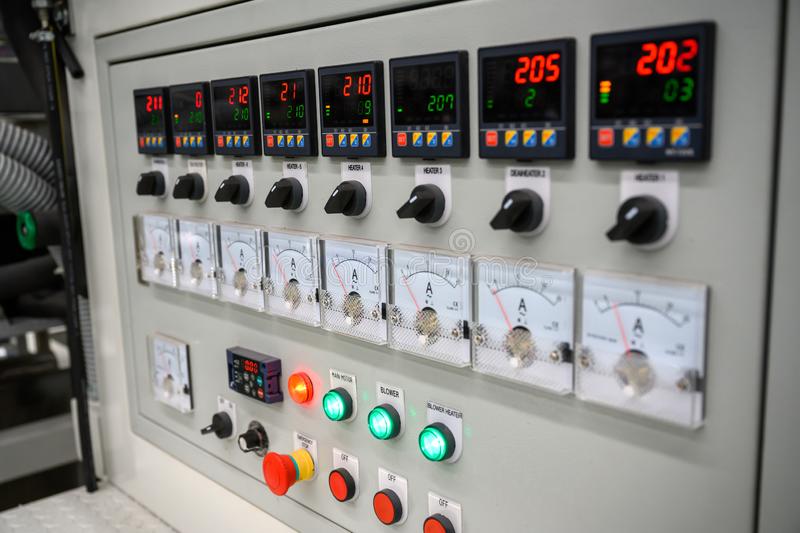
What is KDM MOQ when ordering machine control panels?
KDM has no MOQ (Minimum Order Quantity) for machine control panels.
You can order a single panel if needed.
Are KDM machine control panels UL certified?
UL is short for Laboratoires Underwriters – an international company that creates standards for various applications and conducts testing procedures.
These standards are recognized by the vast majority of countries and are actively used to control the quality of different materials and systems, including electronic equipment.
All KDM machine control panels match UL standards and requirements.
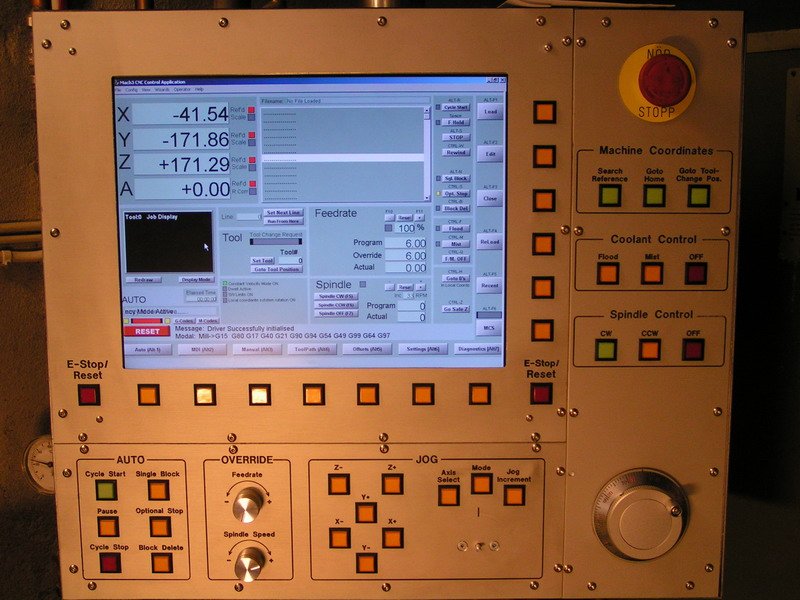
What are the exact standards used when manufacturing machine control panels?
There are three basic standards every machine or panel builder should be familiar with.
These are UL 508A, NFPA 70 and NFPA 79.
# 1. UL 508A (Standard for safety for industrial control panels)
This standard applies to both general and special-use panels.
Also, it contains requirements to comply with NFPA 79.
Keep in mind that there is no exact equivalent of UL 508A in Europe.
Although EN/IEC 61439-1 et EN/IEC 60204-1 have similar requirements, there are major differences between them.
For example, the European and North American standards use different methodologies for determining systems short-circuit current rating (SCCR), and the scope of coverage is slightly different.
# 2. NFPA 70 National Electrical Code (NEC®)
This code contains tips for the proper installation of electrical equipment.
Also, it speaks of safeguarding of persons and property from electrical hazards.
Its European analog is EN/IEC 60364-1.
# 3. NFPA 79 (Electrical standard for industrial machinery)
This standard covers not only a machine’s control panel but also its operating environment, rules for operator interface, warning signs, documentation, and testing.
NFPA 79 has been undergoing harmonization with its European counterpart, EN/IEC 60204-1.
However, differences still exist, such as grounding, voltage, and protection requirements.



